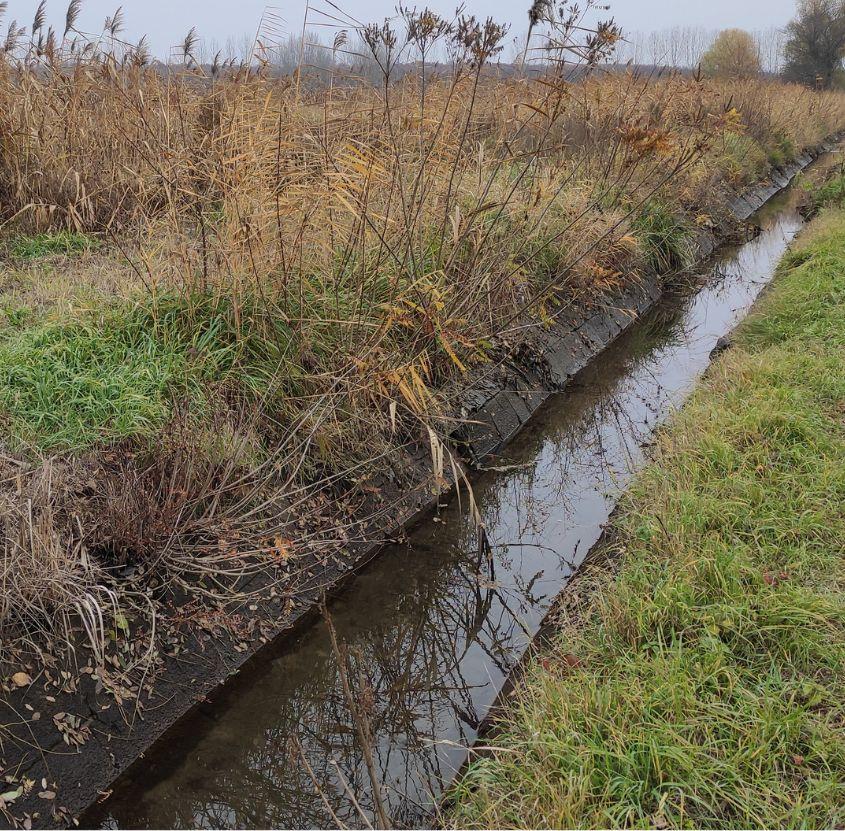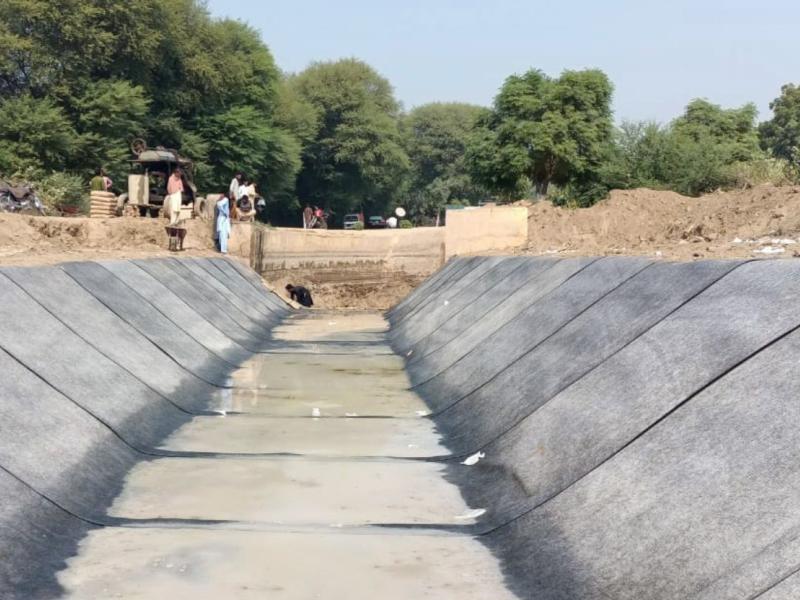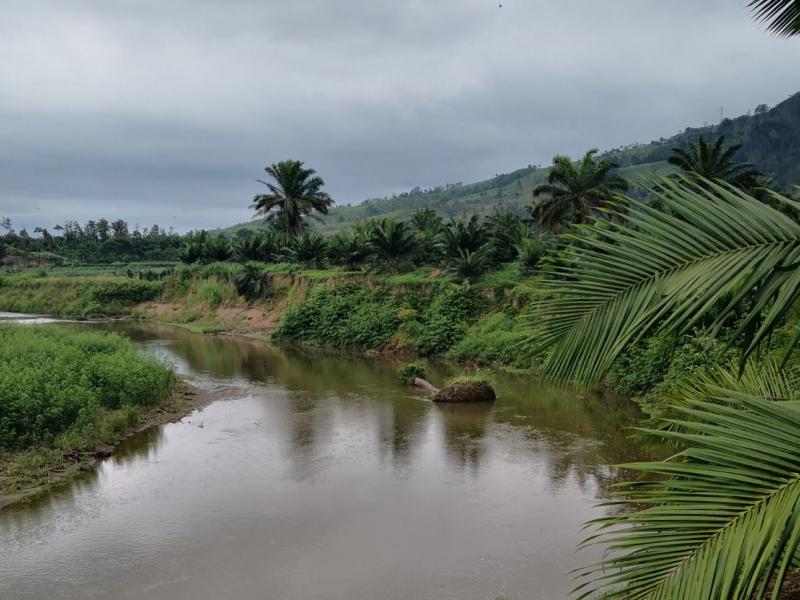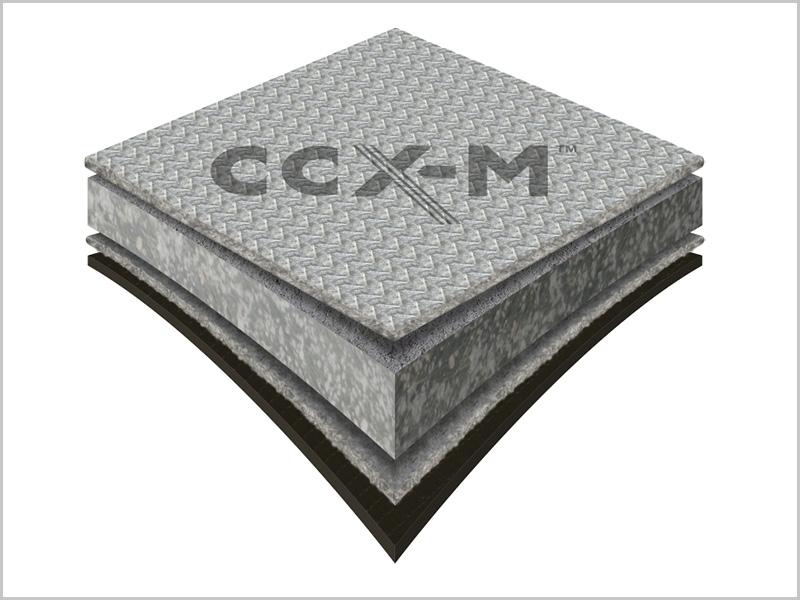
CANAL REHABILITATION WITH CONCRETE CANVAS CCX
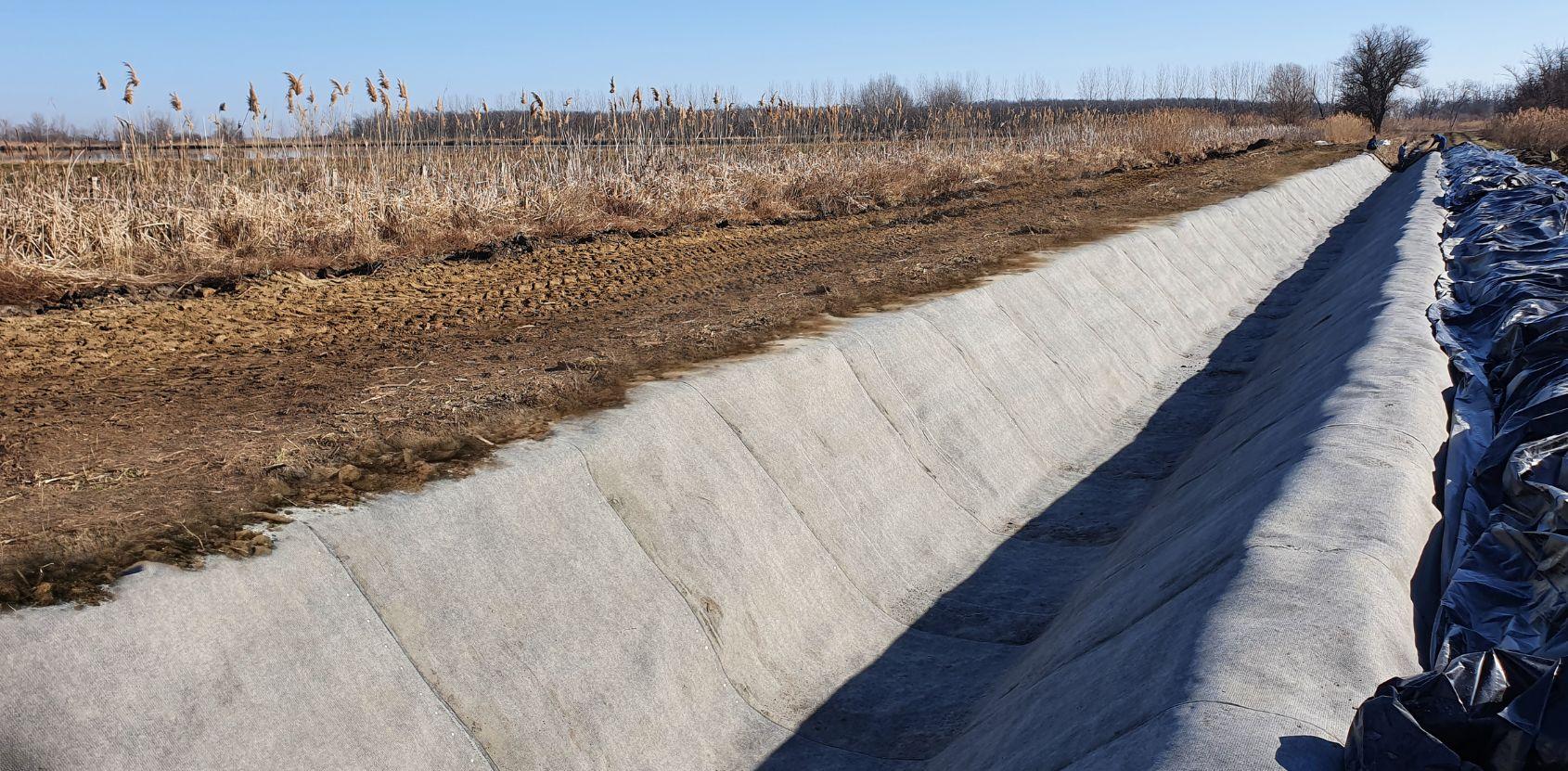
PROJECT DESCRIPTION
In February 2022, CCX-M™ GCCM* was used for canal rehabilitation trial to an irrigation canal located near Tiszafüred, Eastern Hungary. The existing canal was lined small precast concrete slabs that were butted together. The joints between the slabs enabled water to be lost from the canal and were also prone to vegetation growth which required regular maintenance.
As part of remediation solutions to the already existing canal, the client was approached by CC to line a section of the canal with CCX-M™ to determine its speed, ease and efficiency compared to conventional concrete methods. Once the client agreed to the installation, they specified a 90m long section of the canal where the CCX-M™ was to be installed.
CCX-M™ is a Type II GCCM as defined in ASTM D8364 - Standard Specification for GCCMs. CCX-M™ is suitable for lining hydraulic structures with both soil and solid subgrades and was chosen for this project to suit the abrasion, and loading requirements.
OUR SOLUTION
To prepare the site for the installation of CCX-M™ the existing slabs were removed using an excavator. The ground was de-vegetated and the canal reprofiled - with any protrusions removed and voids filled - creating a level surface. The invert was covered with geotextile and filled with stone shingles to create a free draining working platform. Bulk Rolls of CCX-M™ were lifted into place using an excavator and spreader beam. The CCX-M™ layers were laid transversely across the canal and cut into lengths using a box cutter. The upstream and downstream edges were terminated in transverse anchor trenches which were filled with mesh reinforced poured concrete. Crest anchor trenches were dug at approximately 200mm from the shoulders of the canal. The CCX-M™ material was secured within the anchor trench with steel pegs and the trench back filled with soil.
To reduce the potential for water loss between layers, the CCX-M™ was overlapped by 100mm (shingled in the direction of water flow) and thermally bonded together using a Leister Electron hand-held heat gun. The overlaps were then mechanically secured using 30mm stainless steel screws at 100mm spacing, 30-50mm from the overlap edge. CCX-M™ was hydrated using a 1000ltr IBC, generator pump and two hoses and water applied from each side of the canal.
Due to the time of year and location, overnight temperatures dropped to -5°C and during the day rose to between 4 and 8°C with a significant amount of wind chill. Hydration was conducted twice at approximately 30-minute intervals at midday to ensure saturation, with the CCX-M™ then covered with a light black plastic sheet to maximise curing conditions.
570m2 of CCX-MTM was installed in 2 days - 8 hours per day - by 10 people. The works were carried out by KÖTIVIZIG Regional Office for Central-Tisza-Rural Water Directorate Management.

